Labrum repair surgery for shoulder instability
Information for patients from the Trauma and Orthopaedics (T&O) Department
You have been diagnosed with a shoulder instability. This leaflet will explain what shoulder instability is, the signs and symptoms, and how it can be diagnosed. Although the exact method of treatment will differ from patient to patient, the most common treatments used by East Kent Hospitals and their likely outcomes are also covered in this leaflet.
If after reading this leaflet you still have questions or concerns, please speak to your surgeon or anaesthetist at your next appointment.
Contents page
What is shoulder instability?
What is shoulder dislocation?
What are the signs / symptoms?
What are the treatment options available?
How can I prepare for my surgery?
What happens on the day of my surgery?
What kind of anaesthetic will I need?
What are the complications and risks?
How long will I stay in hospital?
Will I be in pain after my surgery?
What painkillers will I be sent home with?
How do I care for my wound(s) at home?
How long will my wound(s) take to heal?
What if my wound bleeds at home?
Can I have a bath or shower?
Why am I wearing a sling after my surgery?
What is the best position to sleep in?
When can I drive again? When can I return to work?
When can I start my normal activities?
Will I have a follow-up appointment?
What if I have any questions or concerns?
Exercises and physiotherapy advice
Contact details
What is the anatomy of the shoulder?
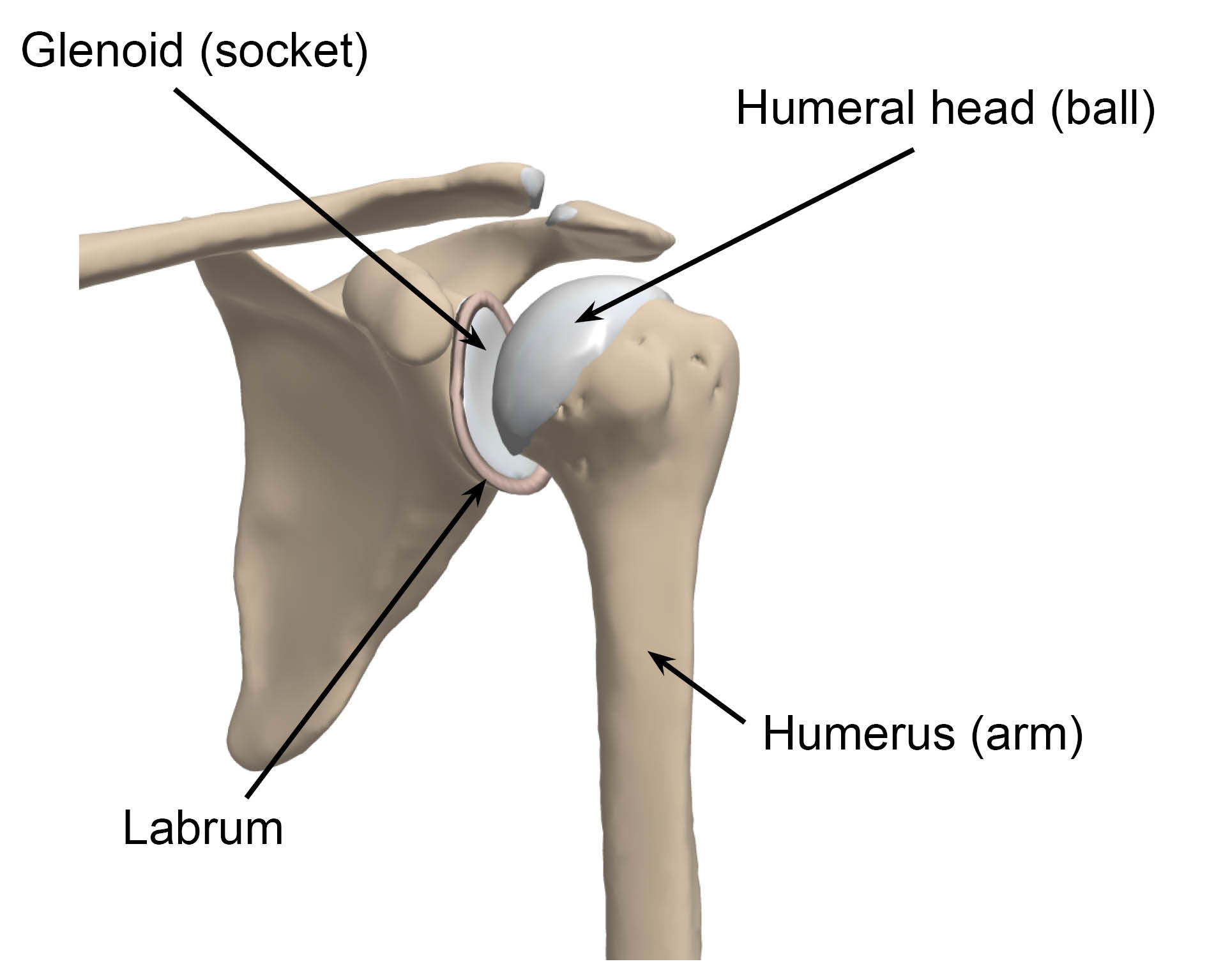
The shoulder is a ball (head of the humerus) and socket (glenoid) joint. The glenoid is surrounded by the labrum, which is a tough but flexible tissue rim that acts like a gasket, lining and reinforcing the joint. The head of the humerus and the glenoid are surrounded by four muscles and their tendons called the rotator cuff, as well as ligaments. These structures connect the shoulder blade to the humerus forming the shoulder joint.
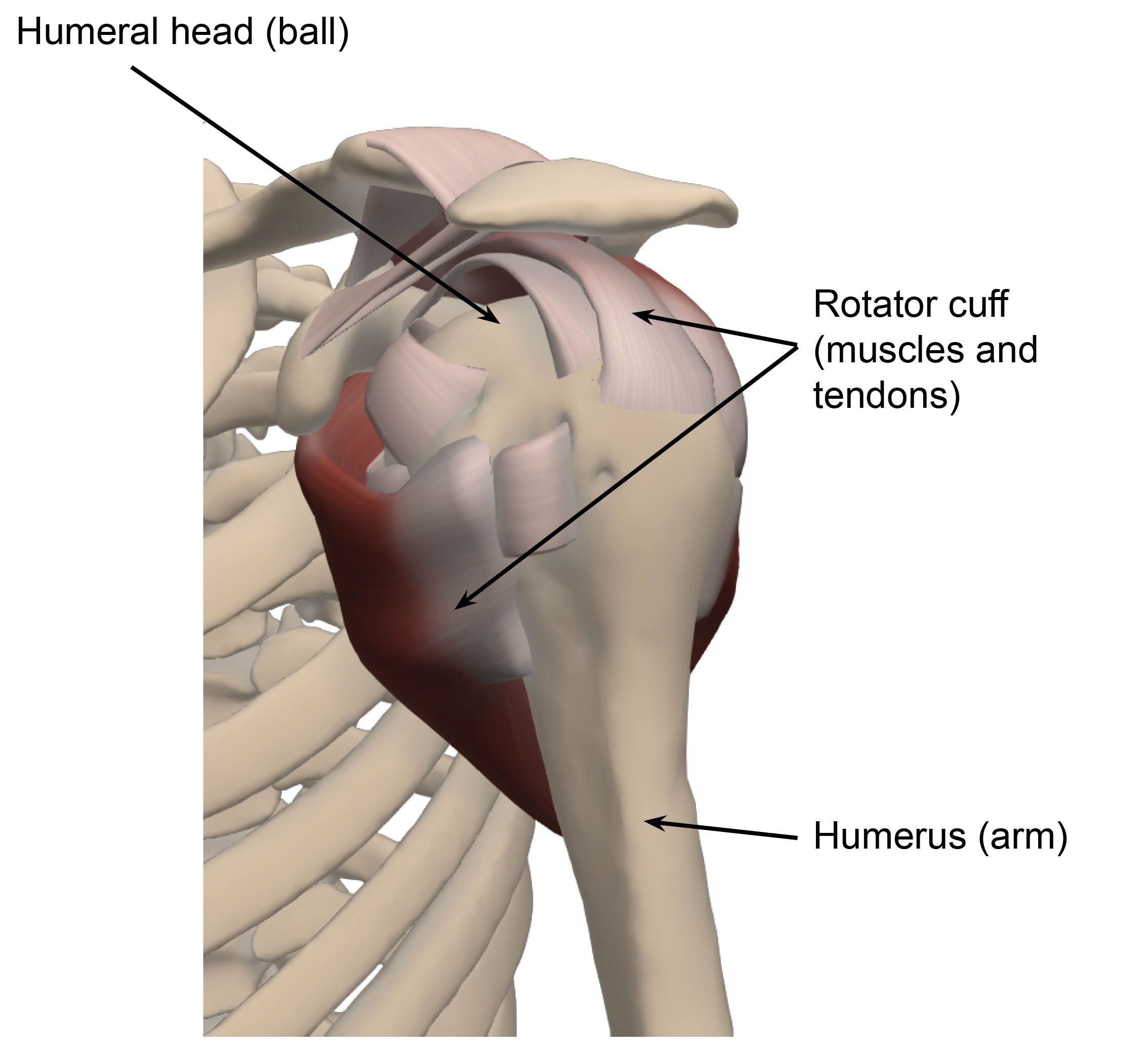
One of the key roles of these structures is to stabilise and hold the shoulder joint in place when we use our arms. The strength of these tendons allow our arms to be lifted and rotated (move in a circle around the joint).
The shoulder joint is a very mobile joint, which allows it to be used for a wide range of movements. So the support from the surrounding soft tissues (muscles, tendons, and ligaments) is essential.
What is shoulder dislocation?
Sometimes the ball of the shoulder comes off the socket; this is called dislocation of the shoulder. Dislocations can occur because of a traumatic injury, hypermobility, or weakness of the tissues that keep the parts of the shoulder in place.
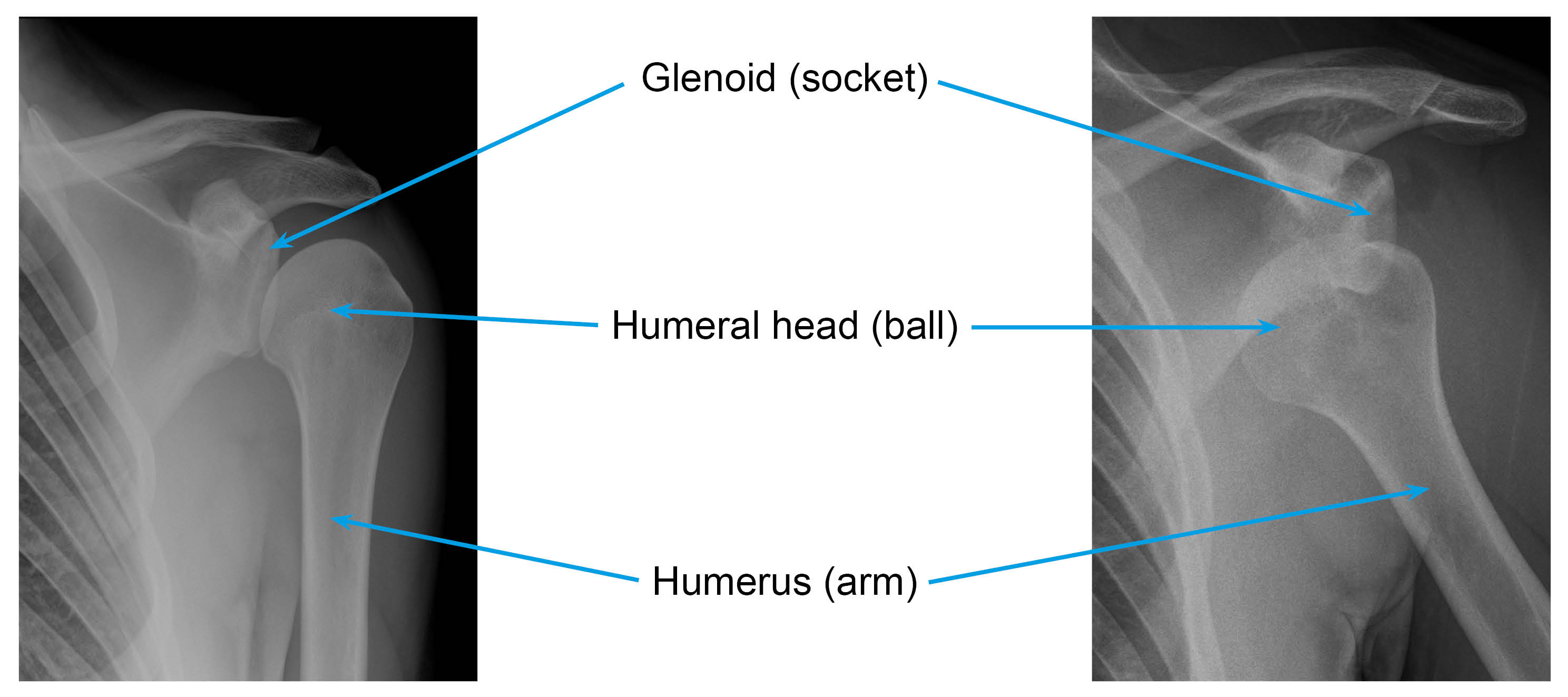
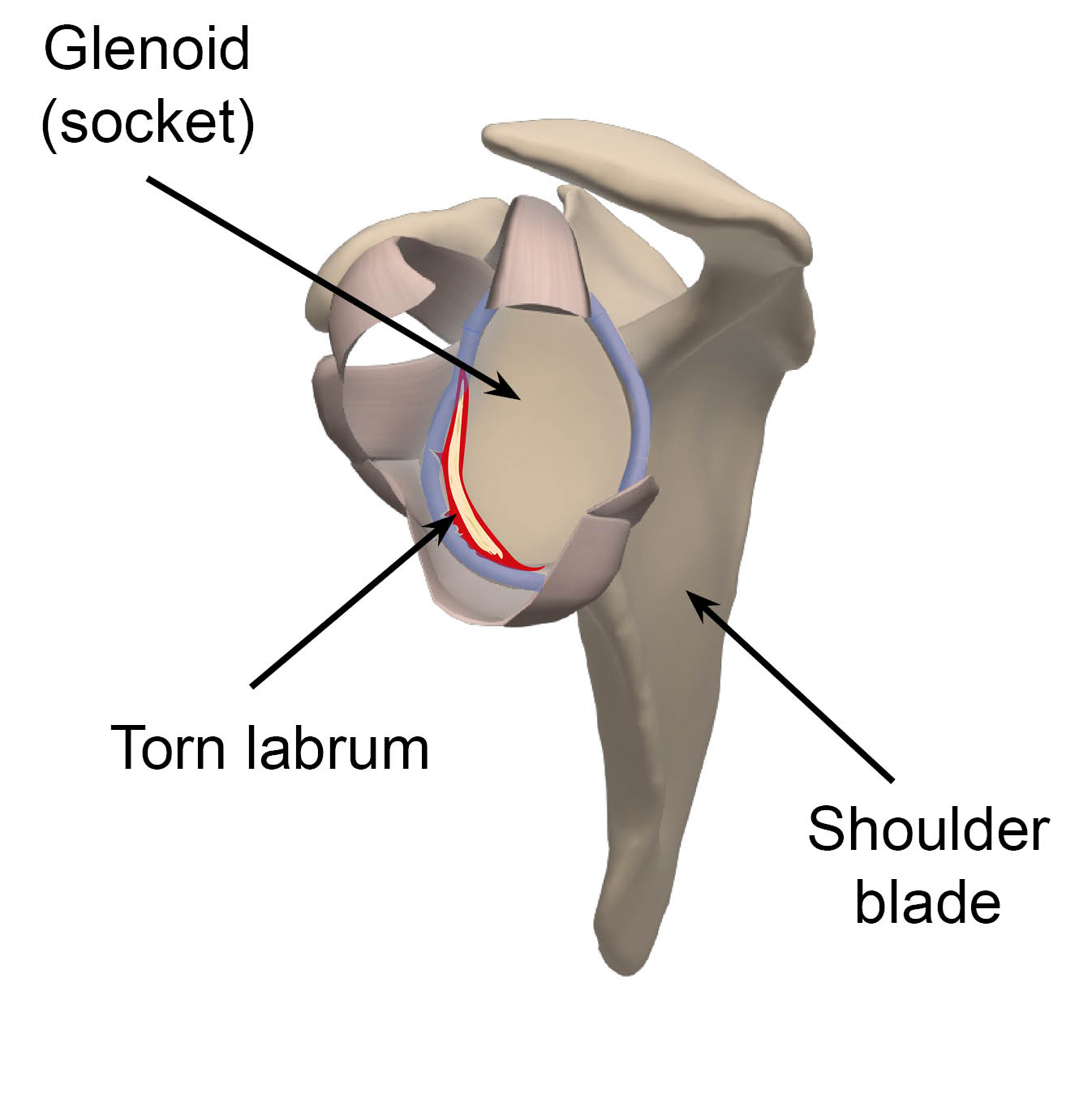
When the shoulder dislocates soft tissues around the joint, such as the labrum, can be torn or stretched, and in some cases need to be repaired. Also, if someone has repeated dislocations this can cause damage to the bone of the socket and the ball. If this damage is extensive, a bony reconstruction may be needed to make the shoulder stable.
What are the signs / symptoms?
A history of dislocations.
Feeling of a “wobbly” shoulder.
Occasional pain due to “soreness” of the rotator cuff tendons, due to overworking to stabilise the joint.
History of hypermobility (double jointed patients).
What are the treatment options available?
The treatment of a shoulder instability can be non-surgical or surgical.
Non-surgical (conservative) management
Some patients find that pain settles with non-surgical treatments, such as physiotherapy and pain management.
Surgical management
If your shoulder continues to be unstable despite simple non-surgical treatment, then surgery can be considered to repair your instability. Surgery can be carried out using keyhole or open surgery. Which treatment we use for your instability will depend on the size of your tear, the extent of your injury, and your general health and fitness.
Keyhole surgery. The surgeon makes small incisions (cuts) so they can introduce a camera and instruments to perform the surgery. The operation involves debriding the scuffed soft tissue and repairing the over-stretched or torn labrum (or other soft tissues) in the shoulder joint. The repair involves stitching the torn or stretched labrum back on to its attachment to the glenoid (socket). This is done using tiny anchors with sutures attached to them. The repair should be protected until healing takes place.
-
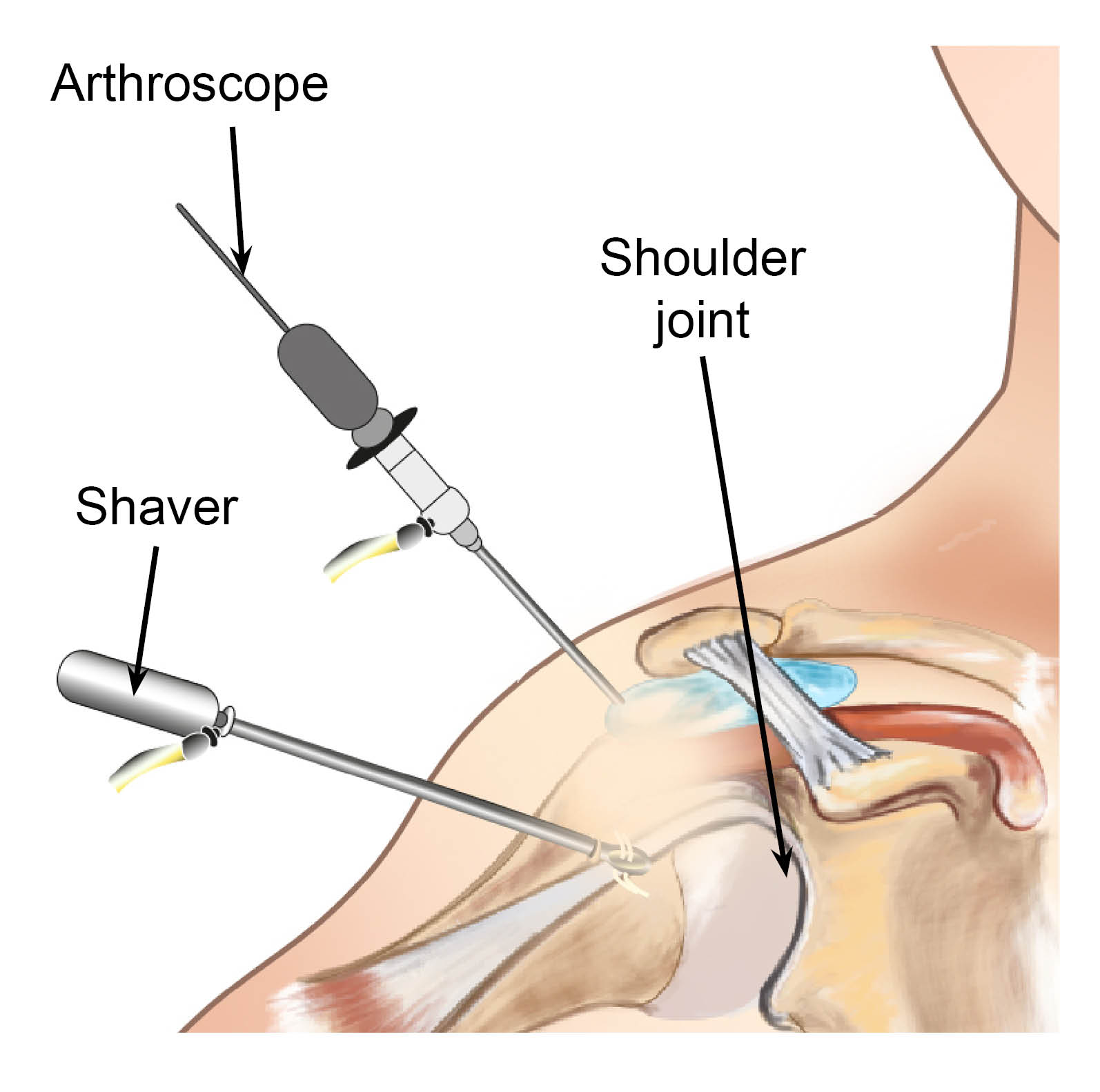 Keyhole surgery
Keyhole surgery -
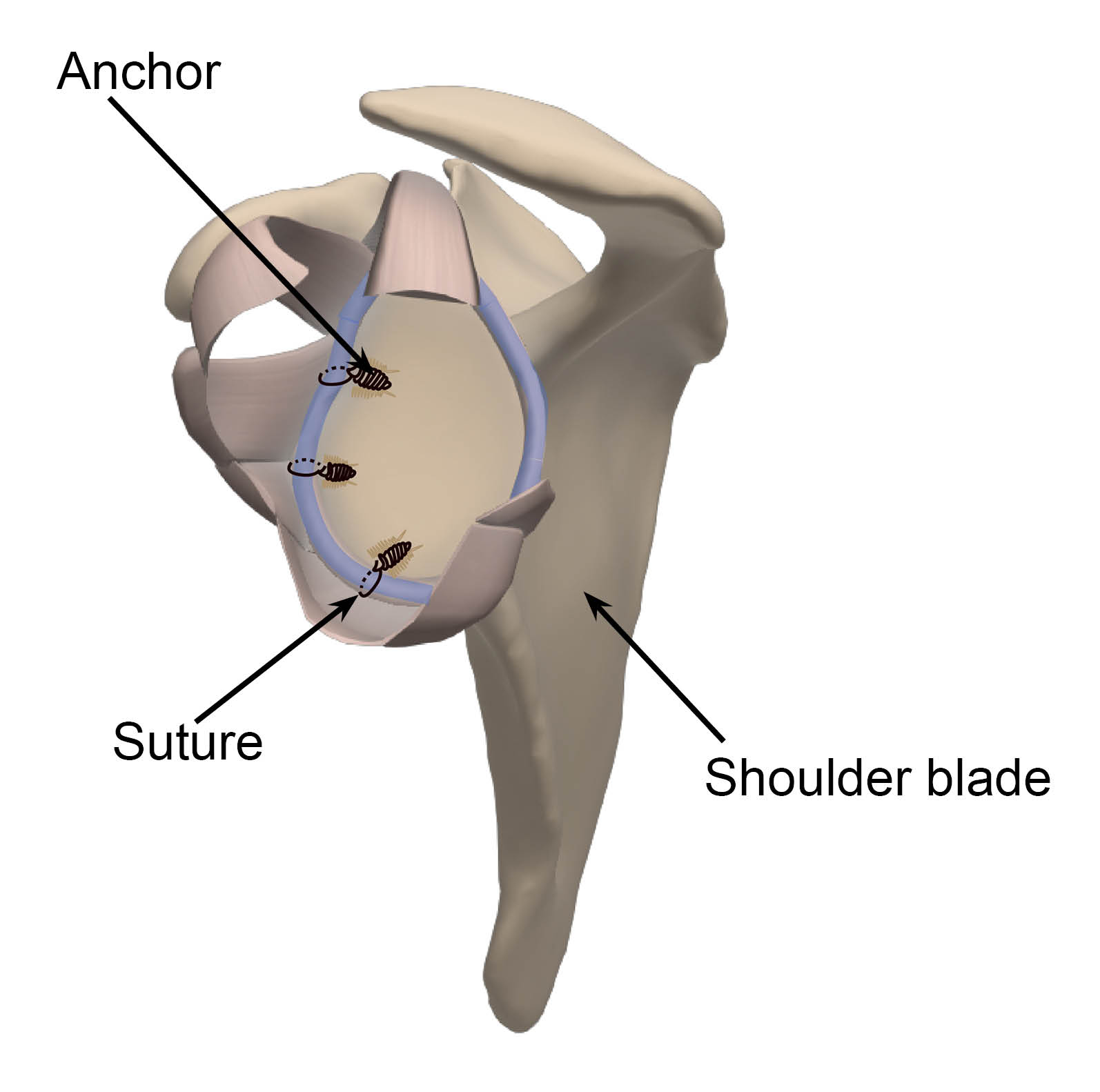 Labrum repair
Labrum repair
Open surgery. If keyhole surgery is not suitable for you, your surgeon may perform an open stabilisation. Open surgery involves making a larger cut in the skin, so your surgeon is able to see your injury and manoeuvre better.
In both cases, once the procedure is finished your doctor will stitch up any cuts made and cover your wound with a dressing, to keep it clean and prevent infection.
All the options available to you will be discussed with you before your treatment plan is decided.
How can I prepare for my surgery?
You will have a preassessment appointment before your surgery, to check if you are ready and fit for surgery. You will also be swabbed for MRSA and Covid-19, if necessary.
Before surgery it helps if you try to get as fit as possible to avoid anaesthetic risk and / or failure of the surgery. It is important that you lose weight if you are above your ideal weight.
Smoking advice
It is important to stop smoking at least 30 days before your surgery. Studies have shown that wound healing is significantly delayed by smoking / nicotine, and the infection rate is much higher. Smoking also harms how your tendon heals following a repair, so smoking after your operation is also not advised.
If you need support to stop smoking, please contact One You Kent on 0300 123 1220, or email.
How does eating a healthy diet help my recovery?
Recovering from surgery can take a long time and it is normal to get frustrated and anxious. But remember that while you are recovering, there are some things you can do to help your wound to heal. We suggest limiting the amount of alcohol you drink, stopping smoking, eating a healthy diet, drinking plenty of fluids (especially water), and staying active. If you need any extra support, do not hesitate to get in touch with us on the contact numbers listed at the end of this leaflet.
Some painkillers (especially those containing Codeine) can cause constipation. To avoid this, please follow a healthy well-balanced diet rich in fruit, vegetables (including green leafy vegetables), nuts, seeds, wholegrains, and legumes, which contain the necessary fibre, and drink plenty of water. More information is available on the NHS 5 A Day: what counts? web site.
What happens on the day of my surgery?
Please arrange for someone to pick you up from the hospital after your surgery, as you will not be able to drive yourself. Please make sure to arrange this before your surgery.
To avoid complications with your anaesthetic, you should not eat anything for six hours before your surgery, or drink anything for two hours. You will be given further instructions during your preassessment.
On the day of your surgery, you can take your usual medication as advised during your preassessment. If possible, do not take non-steroidal anti-inflammatory medication, such as ibuprofen and naproxen, for at least 10 days before your surgery, as they can affect how your wound heals. Please bring any medications that you are taking into the hospital with you.
If possible, please wear loose-fitting clothes, as after surgery you will be wearing a sling.
Bring your appointment letter with you, so you know which department to come to when you arrive at the hospital.
At arrival, you will be asked to put a hospital gown on, and maybe a pair of compression stockings.
You will see the anaesthetic and surgical team before your surgery to go through the consent form and discuss any questions you may still have. Remember you can withdraw your consent for treatment at any time.
You may be tested for Covid-19. All appropriate precautions will be taken during your admission to minimise the risk of contracting the illness as per Healthcare England Guidelines.
What kind of anaesthetic will I need?
This procedure is usually performed under general anaesthetic (you will be asleep for the procedure). However, you may be offered the option of “awake anaesthesia” during your surgery to avoid putting a tube into your windpipe. This may be discussed and decided with you and the anaesthetist on the day of your surgery. Should you be suitable for this type of anaesthesia, it is important to understand and be assured that you will be kept comfortable, and you will not feel any pain during your procedure. Patients describe their experience after this type of “awake anaesthetic” as if waking up from a usual night’s sleep, as it is often supplemented with some light sedation. If you need any more information, please speak to your anaesthetist before your procedure.
In addition, a local anaesthetic or nerve block is used during your operation. As a result, your shoulder and arm may feel numb for a few hours after your operation. It is important to take your pain medications during this time, to allow a gentle and easier control of pain when the nerve block wears off and your shoulder is likely to be sore and uncomfortable.
What are the complications and risks?
As with all surgery, there are a few risks and complications. These are rare and will be discussed with you before your surgery.
Anaesthetic risks will be discussed with your anaesthetist on the day of your surgery.
Wound infection: we do everything we can to avoid this but an infection might still happen. If your wound becomes increasingly red or swollen after your surgery, please contact your GP or speak to your surgical team.
Bleeding: this could happen during your surgery; we will do our best to stop it as soon as possible. However, some oozing could still happen after your surgery. For more information on what to do if your wound continues to bleed at home see the What if my wound bleeds at home? section below.
Soft tissue (nerve / tendon / blood vessel) injury could happen during surgery. Your surgeon will try to deal with it during your operation and it will be discussed with you after your surgery.
Stiffness / loss of movement that may rarely cause frozen shoulder; your shoulder is painful and stiff for months or sometimes years. This could be avoided or improved if you take adequate pain relief and do the exercises listed at the end of this leaflet as your pain permits.
Local swelling (swelling around the shoulder). This could happen after your surgery due to “upsetting” the soft tissues around your shoulder during surgery. It should improve as you recover from your surgery.
Continued pain and Complex Regional Pain Syndrome (CRPS). This is a condition where a person has persistent, severe, and debilitating pain. Although most cases of CRPS are triggered by an injury, the resulting pain is much more severe and long-lasting than normal.
A further dislocation of your shoulder; this happens to one in 10 patients in the first 10 years after surgery.
Deep vein thrombosis (DVT) and / or pulmonary embolism (PE). These are blood clots which form in the blood stream and can be serious conditions. Compression stockings and other measures might be taken by the hospital to avoid them.
The result of your surgery might not be as good as expected. Your surgeon will do their best to get the expected results.
Repaired tissue fails to heal and re-tears. If your surgeon is unable to complete your surgery successfully or the repair fails, other options or further treatment can be discussed after your surgery.
Even if your surgery is successful, the complications listed above may lead to you needing further surgery.
If you have any questions or concerns about these complications, please speak to your surgeon either during your clinic appointment or before your surgery.
How long will I stay in hospital?
This procedure is usually carried out as a day operation, so you should be able to go home the same day.
You will be taken to the ward until it is safe for you to be discharged home. You will be seen by your surgeon, your nurse practitioner (surgical care practitioner), and / or your physiotherapist before you go home. They will show you what exercises to do and give you further advice to guide you through your recovery.
If you need to stay in hospital overnight, this will usually be explained to you during your preassessment appointment. If you have to stay overnight, make sure you bring with you items you may need, such as hygiene items (toothpaste and toothbrush), a dressing gown, slippers, and your usual medication. Also, we suggest you bring a book or magazine, in case there is a delay.
Will I be in pain after my surgery?
This surgery may be uncomfortable, you will need appropriate pain relief in the period after your surgery. If your anaesthetist has given you a nerve block, your shoulder and arm may feel numb and weak. You may not feel any pain immediately after your surgery, as the block may take 12 to 24 hours to wear off completely.
You will be given painkillers when you leave the hospital, to take at home; these should last for at least two weeks. It is very important that you take your pain relief as advised and as early as you can before the nerve block wears off; this will help you to keep on top of your discomfort. It is advisable to take your painkillers regularly for the first few days. If possible, avoid non-steroidal anti-inflammatory medication, such as ibuprofen and naproxen, for at least 10 days before your surgery and six weeks following surgery. This is because anti-inflammatory medication could slow down the healing process.
Take pain relief regularly to try and keep your level of discomfort at a bearable level at all times. This allows the inflammation (redness, swelling, and heat) and pain to settle. Do not wait until your shoulder is very painful to take the pain relief, as it is then more difficult to control.
What painkillers will I be sent home with?
Surgical patients might be given some of the following painkillers, depending on their age, body weight, and individual circumstances, unless told otherwise by their doctor.
Take each painkiller as advised on your prescription.
Tablet paracetamol, 1g every four to six hours (no more than 4g per day).
Codeine Phosphate, 30 to 60mg every six to eight hours.
Tablet Tramadol, 50 to 100mg every eight hours.
Oramorph, 10 to 20mg every hour, as needed.
Anti-inflammatories may be prescribed; but you should try and take as few as possible immediately after your surgery.
Please note that Codeine, Oramorph, and Tramadol should not be taken together; you should only take one of the three at any one time.
Ice packs or bags of frozen peas may also help reduce your pain. Wrap the pack / bag with a cloth and place it on your shoulder for up to 15 minutes. Do not use these peas for eating once they have defrosted.
If your pain continues and is not controlled with the medication you have been advised to take, then please contact your GP. You may also contact the East Kent Upper Limb Team if you need further help.
If you notice your wound area is becoming more painful, red, hot, and / or discharging pus (thick yellow discharge), you may be developing an infection. Contact your GP or your surgical team for advice as soon as possible.
How do I care for my wound(s) at home?
As you had a keyhole surgery, there will be few (around three) keyhole incisions (cuts) around your shoulder, including one or two at the back.
It is important to keep your wound and dressing dry and in place until your wound is well healed, and have your stitches removed at your two week follow-up appointment with your GP practice nurse or at the hospital, with your surgeon or your nurse practitioner (surgical care practitioner). You will be told where your follow-up appointment is going to be before you leave the hospital.
If the dressing gets wet or bloodstained, you can change them yourself by carefully placing a dressing from a pharmacy. If you are unable or have difficulties doing this yourself, you can ask a relative or a friend to change it for you, or you can make an appointment with your GP practice nurse to do it for you.
If you are being seen by your GP practice nurse for a wound check 10 to 14 days after your surgery, please make sure the nurse reads the following. These instructions are for healthy looking surgical wounds only.
*Colourful stitches are non-absorbable and need to be completely removed to avoid them getting buried under the patient’s skin.
*White / clear stitches are absorbable. If any suture knots have been made outside the patient’s skin, please remove these to avoid suture abscesses. Thank you.
*The appearance and material of the sutures can be different from Trust to Trust, but these are the most common.
If a wound does not seem to be healing appropriately, please leave the stitches/knots in place and make another appointment to remove them in few days.
How long will my wound(s) take to heal?
Wounds usually take between 10 to 14 days to heal.
The area around your wounds may have some numbness, which is usually temporary. You may feel occasional sharp pains or ‘twinges’, as well as itching near your scar as it settles.
What if my wound bleeds at home?
There may be minor bleeding or clear fluid oozing from your wound in the first day or two following surgery. If your dressing gets wet or bloodstained, you may need to replace it. You can change this yourself by carefully placing a dressing from a pharmacy. If you are unable to or have difficulties doing this yourself, you can ask a relative or a friend to change for you, or you can arrange an appointment with your GP practice nurse to do it for you. You should be able to control this bleeding or oozing by pressing firmly but gently on your wound for 15 minutes.
If you are worried about the bleeding, you can contact the hospital on the number given to you (during normal working hours) or attend a walk-in centre or Emergency Department (after hours).
Can I have a bath or shower?
You should have a ‘dry wash’ or a shallow bath instead of a shower. This keeps your arm in the correct position and prevents your dressing and sling / wedge from becoming wet.
While your wound is still healing:
do not use soaps, lotions, creams, or powders on your wounds, to avoid any infection getting into your wound(s); and
keep your wound(s) dry at all times.
You can go back to normal cleaning routine once your wound is completely healed.
It is very important to remember to keep your armpit on your operated side clean and dry. Lean forward so you can reach your armpit, as separating it from the body sideways may be difficult or painful and is not allowed for the first four to six weeks.
Why am I wearing a sling after my surgery?
You will return from surgery wearing a sling. The sling is usually used for the first four to six weeks following your operation. The sling protects your tendon repair while it heals.
To start with your sling must be worn at all times, including in bed. After three to six weeks you can remove the sling for exercises, washing, and dressing only.
While wearing the sling, you may find that your armpit becomes uncomfortable. If you lean forward, you will be able to reach your armpit and use a dry pad or cloth to absorb any moisture.
As you begin to heal you will be able to slowly stop using your sling. Your physiotherapist will advise you about this. To start with you can remove your sling when sitting watching TV or reading, and just rest your arm by your side or on cushions.
Do not remove your sling unless you have been told to by your surgeon or physiotherapist.
What is the best position to sleep in?
To begin with sleeping will be difficult. Take regular painkillers and try to support your shoulder by placing pillows behind it. If you lie on your back, a pillow under your arm and elbow may make you feel more comfortable. You may find it easier to lay on your non-operated side.
You can lay on your operated side as soon as you feel comfortable and confident to do so, but it can take up to three months before you can do this.
When can I drive again?
You will not be able to drive for at least eight weeks following your surgery. Your surgeon will tell you when you can drive again.
The advice from the DVLA is that you should not drive until you are physically capable of controlling a motor vehicle and can perform an emergency manoeuvre, such as an emergency stop safely and confidently.
Please arrange for someone to collect you from hospital and take you home after your surgery.
When can I return to work?
This will depend on your job and how extensive your surgery was, but expect to be off work for at least four weeks.
If you have an office job or you can do light duties you may return to work as soon as you feel able to; usually after two to four weeks. Remember you will not be able to drive to work.
If your job involves heavy lifting or using your arm above shoulder height, you may need to stay off work longer; this could be between 12 and 16 weeks. Your surgeon will advise you on how long you will need to be off work; you can ask for a sick note before you leave the hospital.
When can I start my normal daily activities?
This will depend on how extensive your surgery was. Your physiotherapist and surgeon will advise you when it is safe to start your usual leisure activities again. You can start simple activities that do not involve your upper arm about three months after your surgery. However, you may need to wait more than six months before restarting contact sports or sports that need you to use your upper arm.
Your physiotherapist can plan your treatment around your personal objectives.
Will I have a follow-up appointment?
Before you leave hospital, an appointment will be made for you to have a follow-up appointment at the Upper Limb Unit. At this appointment you will be seen by a physiotherapist, surgical care practitioner, or surgeon who will check your progress, make sure you are moving your arm, and give you further exercises, as appropriate.
This appointment will usually be three to four weeks after your surgery. You will be monitored by a physiotherapist throughout your rehabilitation.
What if I have any questions or concerns?
If you have any questions or concerns, please contact your surgeon, surgical care practitioner, or physiotherapist. Their contact details are listed at the end of this leaflet.
If you notice your wound area is becoming more painful, red, hot, and / or discharging pus (thick yellow discharge) you may be developing an infection. Contact your GP or your surgical team for advice as soon as possible.
Exercises you can do after surgery, before your first physiotherapy appointment
These exercises will help avoid stiffness in your hand and elbow and reduce stress at your neck and scapula (shoulder blade).
Before starting the following exercises, please take painkillers and use ice, if needed. It is normal to experience some pain and discomfort when you perform any exercises. If you experience prolonged pain or discomfort when moving, then do the exercises less forcefully or less often. If this does not help, speak to your physiotherapist.
On the next page you will see how to perform these exercises, but if you have any questions, please contact the Physiotherapy Department (see the contact details at the end of this leaflet). These exercises are a guide. Specific instructions will be given to you in your post-operative notes.
It is best if you do a few short sessions (two to four times a day, for five to 10 minutes each time) rather than one long session. Gradually increase the number of repetitions you do.
Following your first appointment with your physiotherapist, you will receive more exercises and, depending on your progress, your physiotherapist will give you personalised advice.
Physiotherapy guidelines while you are still in the hospital
An outpatient physiotherapy referral will be arranged by a member of the inpatient physiotherapy team.
You will be shown how to put on and care for your sling.
You will be shown the following exercises on the ward:
elbow, wrist, and hand exercises
shoulder girdle and posture exercises
pendular shoulder exercises
assisted movements in to shoulder flexion and assisted movements into external rotation of your shoulder within the “safe zone”.
A relative or friend can be taught these exercises as well.
Physiotherapy guidelines once you leave the hospital
You will be shown early shoulder exercises in “safe zone” by a member of the inpatient physiotherapy team.
In addition to the exercises listed below, you will be shown further exercises at your outpatient physiotherapy appointment or clinic appointment. If you have any questions, please contact the physiotherapists listed at the end of this leaflet.
Hand exercises
Open and close your fist 20 times.
Wrist exercises
Move your wrist up and down 20 times.
Forearm exercises
Turn your palm up and down 20 times.
Elbow exercises
Bend and straighten your elbow 20 times. This can be completed with help from your other arm.
Shoulder girdle and posture
Try not to slouch after your surgery.
Try pulling your shoulder blades back and down 20 times.
Pendular exercises
Lean forwards, supporting yourself with your other arm.
Swing your operated arm forwards and backwards gently, like a pendulum.
Do this 20 times.
Contact details
Consultants and their secretaries
The teams listed below work at Kent and Canterbury Hospital as well.
| Hospital site | Consultant | Secretary name | Contact number |
|---|---|---|---|
| Queen Elizabeth the Queen Mother (QEQM) Hospital, Margate | Mr Sathya Murthy | Tracy Blackman | 01843 235068 |
| Queen Elizabeth the Queen Mother (QEQM) Hospital, Margate | Mr Georgios Arealis | Donna Cannon | 01843 235083 |
| William Harvey Hospital, Ashford | Mr Paolo Consigiliere | Heather Littlejohn | 01233 616280 |
| William Harvey Hospital, Ashford | Mr Jai Relwani | Dione Allen | 01233 616737 |
| William Harvey Hospital, Ashford | Surgical Care Practitioner | Alphonsa Augustine | 07929 375381 |
| Hospital site | Physiotherapist | Contact number |
|---|---|---|
| Buckland Hospital, Dover | Abi Lipinski | 01304 222659 |
| Kent and Canterbury Hospital, Canterbury | Sarah Gillett (inpatient) | 01227 866265 |
| Kent and Canterbury Hospital, Canterbury | Darren Base | 01227 783065 |
| Queen Elizabeth the Queen Mother (QEQM) Hospital, Margate | Caroline Phillpott (inpatient) | 01843 234575 |
| Queen Elizabeth the Queen Mother (QEQM) Hospital, Margate | Martin Creasey | 01843 235096 |
| Royal Victoria Hospital, Folkestone | Ailsa Sutherland | 01303 854410 |
| William Harvey Hospital, Ashford | Cindy Gabett (inpatient) | 01233 633331 |
| William Harvey Hospital, Ashford | Chris Watts | 01233 616085 |
Surgical Preassessment Units
| Hospital site | Contact number |
|---|---|
| Kent and Canterbury Hospital, Canterbury | 01227 783114 |
| Queen Elizabeth the Queen Mother (QEQM) Hospital, Margate | 01843 235115 |
| William Harvey Hospital, Ashford | 01233 616743 |
Fracture Clinic
| Hospital site | Contact number |
|---|---|
| Kent and Canterbury Hospital, Canterbury | 01227 783075 |
| Queen Elizabeth the Queen Mother (QEQM) Hospital, Margate | 01843 235056 |
| William Harvey Hospital, Ashford | 01233 616849 |